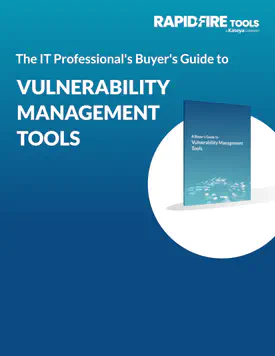Almost everybody understands how a breach occurs. Cybercriminals scan your computer systems from the outside for vulnerabilities in your firewall (if you have one). Once breached, hackers use automation to quickly probe every single device connected to your network, looking for an opening to gain administrative access to take over a computer or even the entire network. For cybercriminals, it’s not the size of the business that matters, it’s the ease of access.
Although many small and mid-size businesses (SMBs) think they’re too insignificant to draw the attention of hackers, breach reports prove otherwise with 66% of SMBs experiencing a cyberattack in the past 12 months. Most of those attacks (70%) were executed via web applications and miscellaneous errors, aka internal vulnerabilities.
IBM’s most recent Cost of a Data Breach report puts the average cost of a data breach at $4.24 million when you add up all the direct and indirect costs, including downtime, fines, lawsuits, notifications and identity protection, for individuals who were compromised.
The National Institute of Standards and Technology (NIST) recommends vulnerability scans to be run at least quarterly, regardless of network size or type. However, for any organization that relies on continuous availability of their computer network for regular operations, a vulnerability scan should be run at least monthly, and even more frequently for organizations that collect and/or process personal, financial or sensitive data.
Even with this information, many companies aren’t willing to invest in cybersecurity to properly protect the lifeblood of their organization. It goes without saying that the cost a data breach can inflict far greater damage than just financial ramifications. Loss of customers and their trust are incalculable repercussions that could completely sink any organization.
Consider these numbers:
- 52% of businesses reported credentials were their most compromised data
- 83% of business data breaches were financially motivated
- 22% of businesses transferred to remote work without a designated threat prevention plan
- 50% of business owners admitted they don’t provide security awareness training to employees
- 58% of businesses stated that workers ignore cybersecurity directives
If you don’t want to become another breach statistic and are looking for a vulnerability management tool that is budget friendly, meets your needs and can adapt to changes in your business, then consider VulScan.
VulScan is the industry-leading vulnerability management platform that provides both internal and external vulnerability scanning and can be equipped with an optional portable scanner you can tote from one location to another for ad hoc scans. It includes all the key features and functions you need, without the unnecessary bells and whistles that add complexity and cost.
Get a demo of VulScan and see how it puts you in the ideal position to deliver vulnerability management and simplify the vulnerability management lifecycle.
